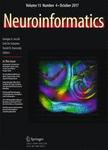版权所有:内蒙古大学图书馆 技术提供:维普资讯• 智图
内蒙古自治区呼和浩特市赛罕区大学西街235号 邮编: 010021

作者机构:Univ Nottingham Sch Psychol Nottingham NG7 2RD England Univ Nottingham Sch Math Sci Nottingham NG7 2RD England
出 版 物:《NEUROINFORMATICS》 (神经信息学)
年 卷 期:2012年第10卷第2期
页 面:199-218页
核心收录:
学科分类:1002[医学-临床医学] 1001[医学-基础医学(可授医学、理学学位)] 0812[工学-计算机科学与技术(可授工学、理学学位)] 10[医学]
基 金:Welcome Trust [085444/Z/08/Z] Wellcome Trust [085444/Z/08/Z] Funding Source: Wellcome Trust
主 题:Computational modelling V1 Striate cortex Filter-based Model fitting Optimisation methods Evolutionary algorithms Pareto optimality
摘 要:In the study of neurosciences, and of complex biological systems in general, there is frequently a need to fit mathematical models with large numbers of parameters to highly complex datasets. Here we consider algorithms of two different classes, gradient following (GF) methods and evolutionary algorithms (EA) and examine their performance in fitting a 9-parameter model of a filter-based visual neuron to real data recorded from a sample of 107 neurons in macaque primary visual cortex (V1). Although the GF method converged very rapidly on a solution, it was highly susceptible to the effects of local minima in the error surface and produced relatively poor fits unless the initial estimates of the parameters were already very good. Conversely, although the EA required many more iterations of evaluating the model neuron s response to a series of stimuli, it ultimately found better solutions in nearly all cases and its performance was independent of the starting parameters of the model. Thus, although the fitting process was lengthy in terms of processing time, the relative lack of human intervention in the evolutionary algorithm, and its ability ultimately to generate model fits that could be trusted as being close to optimal, made it far superior in this particular application than the gradient following methods. This is likely to be the case in many further complex systems, as are often found in neuroscience.